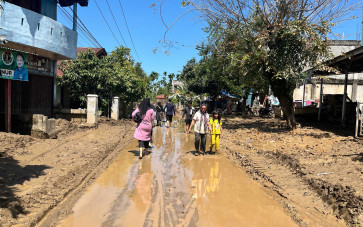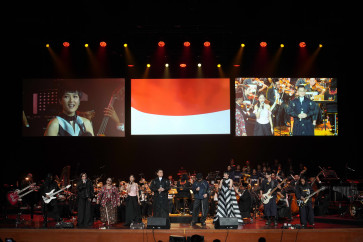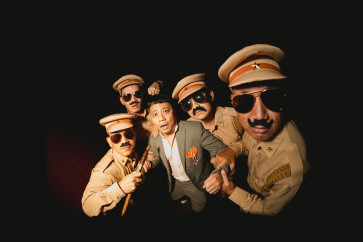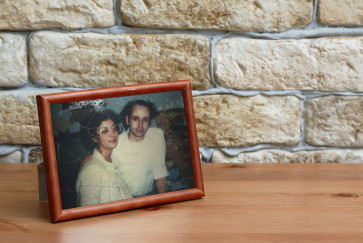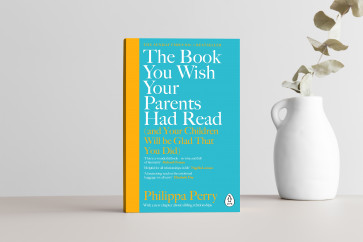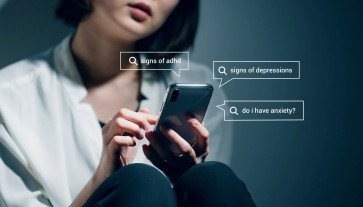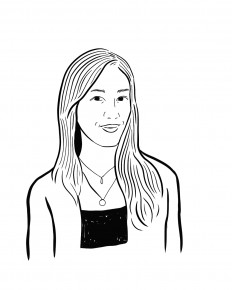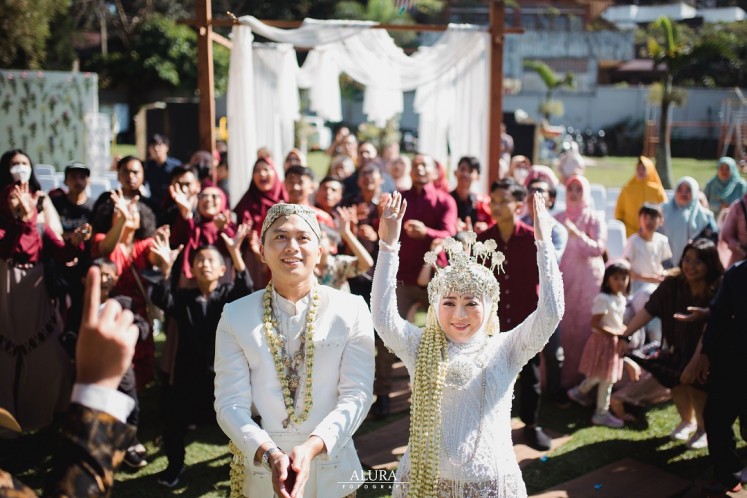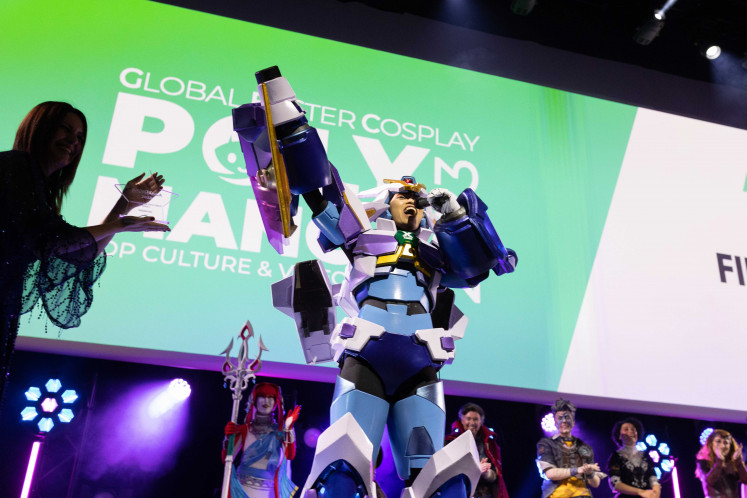(Courtesy of Shutterstock)
There’s this movie in my mind, remnants of a short clip I saw when I was younger. The first frame shows a man listening to the car radio, stuck in classic stand-still Jakarta traffic, eager to get home to his family. Out of nowhere, someone hands him a bottle, though the logo isn’t quite clear in my head.
After hours of racking my brain and wondering why these images are in my head, it hit me: it was probably a commercial for Teh Botol that usually comes on during Ramadan. I have not been able to find that commercial on YouTube or any other platform though, so if it does exist, it is probably only in my memory.
As a Catholic born and raised in Indonesia, Ramadan has always been a happy time for me. From the first sighting of a ketupat to the sound of pots and pans before sunrise, culminating in vibrant fireworks, the holy month is always something my family and I look forward to.
As a child who spent a considerable amount of time in front of the television, the new commercials that pop up during this season are the cherry on top. This treat could soon be a fading memory, lost amid the rise of streaming services devoid of advertising interruptions.
The Ramadan commercials of Indonesia to me are analogous with the Superbowl commercials in the United States, another cultural phenomenon I look forward to, as I belong to the minority who actually enjoy commercials and trailers.
It’s high time for us to stop sleeping on good Ramadan commercials that are not just a means to sell us products. I implore you, dear readers, to join me in this obsession this year.

Thank you!
For signing up to our newsletter.
Please check your email for your newsletter subscription.
Seasonal storytelling
While the storylines are different, most Ramadan ads convey the same theme of family togetherness, kindness and peace, featuring music with religious undertones that we associate with the fasting month.
Notable brands that take advantage of this period for “seasonal marketing” efforts include Marjan syrup, Indomie and Bango. While the marketing tactics may work for all sectors, most of the brands that partake are largely in the food and beverage category, as most celebrations usually involve meals large enough to feed an army.
Not many will create as much buzz as the annual Marjan Ramadan commercials, as they echo traditional stories that strategically spotlight our culture and are reminiscent of the Marvel Cinematic Universe we love so much. This year, the commercial tells the story of a girl, Putri Hijau, who rises to the occasion and takes responsibility for the protection of her environment against the greed of the antagonist, Tuan Jungkat.
The commercials seem to have been effective in recent years, as 60 percent of Indonesians have top-of-mind unaided awareness of Ramadan advertisements by Marjan, per research conducted by YouGov RealTime Omnibus released in March 2022. The same research also found that the syrup brand is among those whose Ramadan advertisements that are most recalled by consumers across multiple generations.
While Marjan decided to go the mythical route, other commercials, like Bango, have chosen to tug on the viewers’ heartstrings with a plate of tempe orek (sliced tempeh cooked in spices) and the feeling of homesickness. By the end of the commercial, the son comes back home and a sweet scene featuring him helping his mom cook in the kitchen is shown on the screen.
“Storytelling [is usually] about Ramadan itself, with themes like breaking fast. Usually [there’s] less branding for Ramadan, but it depends too, like maybe, for example, Palmia margarine, whether you like it or not, you have to show the branding anyway, right? But like some of the brands, just the storytelling strengthens the branding,” said Gilang Darmawan, founder and executive producer for Ostrich Films.
Read also: Female-led start-up aims to help decarbonize Indonesia’s futureCultural glimpse
In addition to the food and beverage industry, e-commerce brands also tend to be active this time of year. Traveloka aims to announce discounts for the holidays, while the banking industry will encourage customers to log on to their mobile apps to transfer financial incentives or THR (holiday allowances).
Watching the many commercials, it’s not hard for foreigners to get a glimpse of the Ramadan culture in Indonesia. Parallel to the ever-changing cultural trends, the storylines of the commercials also evolve.
“We found that clients spend more during Ramadan because every country has a big festival. During the big festivals, they like to showcase their brands much better. Ramadan in Indonesia is a big festival, so we deserve what we call ‘a window to the brand.’ You have to advertise more during Ramadan in order to capture the peak season,” said Suresh Subramanian, CEO of Kantar Indonesia.
The market research company has been publishing research into Ramadan ads for the past seven years, with the 2024 insights expected to be published in May. According to its research, there has been a shift in the ones people respond to, with the new recipe consisting of three factors: authentic experiences through powerful storytelling, meaningful connections and humor.
Breaking the mold
“Many years back, there was a template every ad in Ramadan used to have, like bukber [breaking the fast] and mudik [homecoming exodus]. Every ad was similar, but what we found in all the research we have done every year is that people like ads that break the mold,” Suresh added.
Exemplifying an authentic experience, Lifebuoy debuted a commercial last year that portrayed a bond between a mother and her daughter, only to throw a curveball toward the end that can be compared to the 1999 film The Sixth Sense. Without spoiling the storyline, let’s just say that the almost three-minute long commercial successfully conveys grief and an aching feeling of longing.
Meanwhile, a commercial by Astro made most of us feel seen when a little girl and her mother showed fear in their eyes when their maid announced that she’s partaking in the annual mudik tradition of going back to her village. This is a departure from the tired template of commercials showing the joy of cooking together during Ramadan. Like them, I feel grateful we live in a society where ordering food is considered common practice.
“Just showing a whole family getting together, having a meal, that doesn't work anymore because that has become a template. The ads that do really well are ads that are more personal, that are really bold. There are many examples over the years of various themes that don't follow the template, and those ads tend to be liked the most by consumers,” he said.
Echoing the statement, Gilang mentioned that at the core of the storytelling, these commercials are made to reflect what is happening in society. Emotional and real stories help brands make better connections to their consumers and leave a lasting legacy.
Read also: : How to navigate unwanted questions and survive family gatheringsPandemic changes
While there is an underlying theme of kindness and family unity in all Ramadan commercials, a shift has also been evident during and after the pandemic era of 2020. According to market research company Quantum, the pandemic elevated how the common man values emotional and psychological health and wellbeing.
What came out of the pandemic in 2023, therefore, were ads showing people rising to the occasion, making them the hero in their own stories, as well as stories about living life to the fullest.
For example, one commercial for cooking oil Bimoli shows the personal happiness of two different women that can only be achieved through dancing and cooking alone in your kitchen.
Tea brand Sari Wangi launched a commercial that prioritizes the health benefits of one of our favorite beverages, featuring scientific jargon that would not be part of a daily conversation unless you’re a scientist. Strategically pairing the tea with one of our favorite guilty pleasures, gorengan (fried food), the commercial is a push and pull between tradition and new-found appreciation of physical health.
Indomilk’s kental manis (sweetened condensed milk), meanwhile, set out to heal our unmet desires to travel the world. Bringing home foreign experiences through food, the ad highlighted the creativity of cooking everything from Japanese dorayaki to Thai mango sticky rice with kental manis. Who needs a passport and a plane ticket when you have a pouch of Indomilk and a wild imagination?
We can only hope this year’s commercials are bigger and better.
Enduring traditions
However, Suresh does not necessarily agree that these changes are here to stay. As the pandemic slowly gets relegated to a distant memory, health benefits and wanderlust will take a backseat as family dynamics take center stage again.
“I think Indonesia is a very familial country; just health-type advertising doesn't work. What works, earlier it used to be big families. Those types of relationship-type advertising work much better than just one person,” he explained.
But will these Ramadan commercials fade away with the shift away from television?
Television is still one of the most important mediums for news and entertainment in the country. Research data from Nielsen Consumer & Media View Q3 2022 (Indonesia) found that TV remains the leading media presence across the archipelago with an 81.1 percent reach, followed by the internet at 76.7 percent.
However, the rate of digitalization and the move to handheld devices and digitalization was greatly accelerated by the pandemic. For most people, I think we can all agree that we get our daily dose of commercials via social media or through the games that we refuse to purchase ad-free.
Still, some things remain the same.
“People nowadays, usually and especially for fasting Muslims, watch TV. Actual TV, not Netflix or anything during sahur [predawn meal] so there are a lot of food & beverage brands that broadcast on TV, not just digital,” Gilang concluded.
Read also: The ‘bukber’ tradition: Holy rites, warmth and unwanted questions
This article is part of The Weekender, which comes out on the Saturday edition of The Jakarta Post. It offers a variety of lifestyle and culture articles aimed at enriching your reading experience. Subscribe
here to get access to the Saturday edition and all other premium content from the Post.




